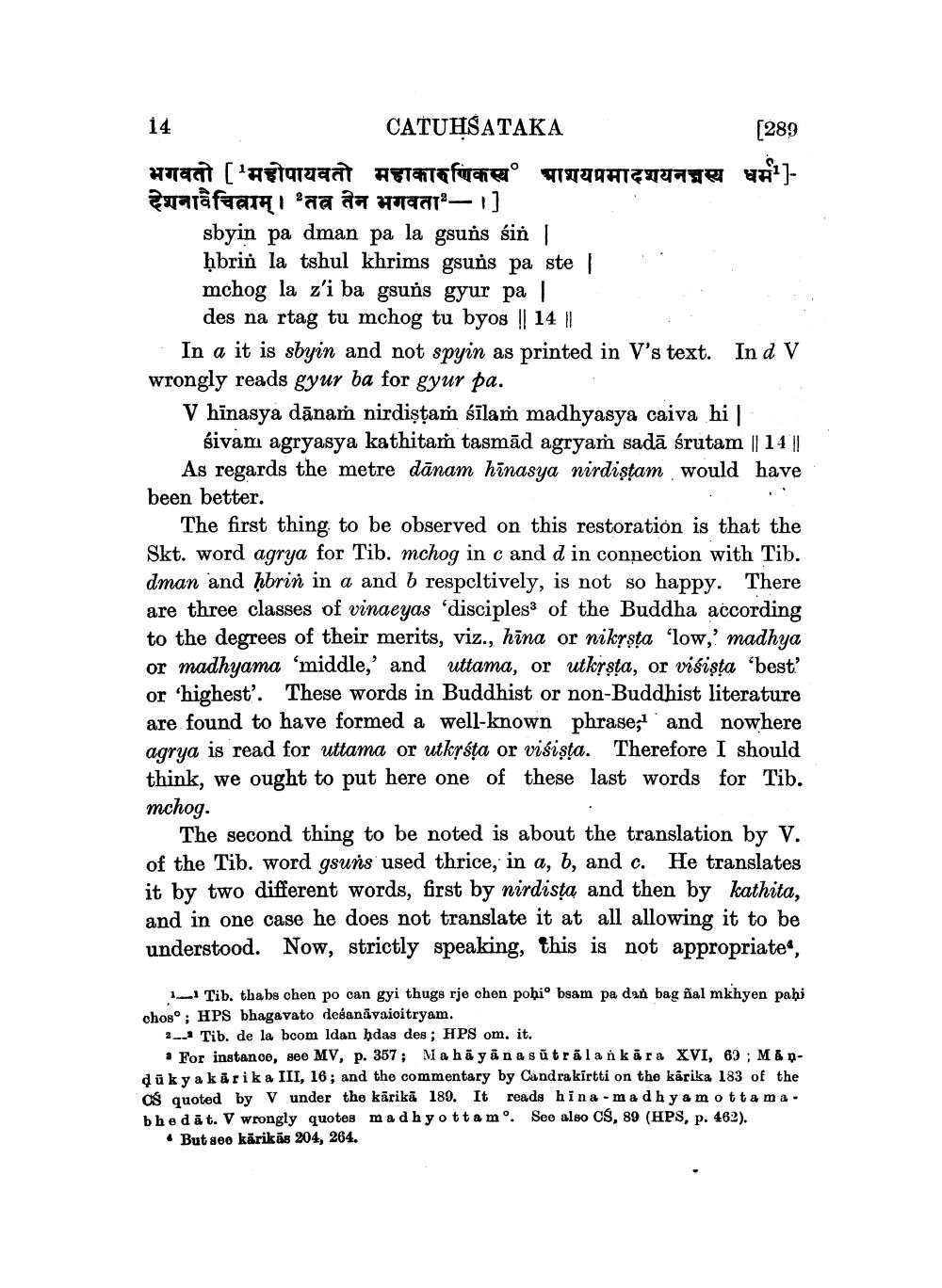________________ 14 CATUHSATAKA [289 Huat [ 'Aftquaat Aflata fucie TOHTIINTE देशनावैचित्राम् / तत्र तेन भगवता-1] sbyin pa dman pa la gsuns sin | hbrin la tshul khrims gsuns pa ste i mchog la z'i ba gsuns gyur pa des na rtag tu mchog tu byos || 14 || In a it is sbyin and not spyin as printed in V's text. In d V wrongly reads gyur ba for gyur pa. V hinasya danam nirdistam silam madhyasya caiva hi! sivam agryasya kathitam tasmad agryam sada srutam || 14 || As regards the metre danam hinasya nirdistam would have been better. The first thing to be observed on this restoration is that the Skt. word agrya for Tib. mchog in c and d in connection with Tib. dman and hbrin in a and b respcltively, is not so happy. There are three classes of vinaeyas 'disciples of the Buddha according to the degrees of their merits, viz., hina or nikrsta 'low, madhya or madhyama 'middle,' and uttama, or utkrsta, or visista 'best! or 'highest'. These words in Buddhist or non-Buddhist literature are found to have formed a well-known phrase, and nowhere agrya is read for uttama or utkreta or visista. Therefore I should think, we ought to put here one of these last words for Tib. mchog. The second thing to be noted is about the translation by V. of the Tib. word gsuns used thrice, in a, b, and c. He translates it by two different words, first by nirdista and then by kathita, and in one case he does not translate it at all allowing it to be understood. Now, strictly speaking, this is not appropriate Tib. thabs chen po can gyi thugs rje chen pohio bsam pa dan bag nal mkhyen pasi chogo; HPS Bhagavato desanavaioitryam. 2. Tib. de la boom ldan hdas des; HPS om, it. . For instance, seo MV, p. 357 ; Mahayana sutralan kara XVI, 63 ; M& duky a karika III, 16; and the commentary by Candrakirtti on the karika 183 of the as quoted by V under the karika 189. It reads hina - ma dh ya mottama. bhedat. V wrongly quotes madhyottam. See also CS, 89 (HPS, p. 462). * But see karikas 204, 264.




